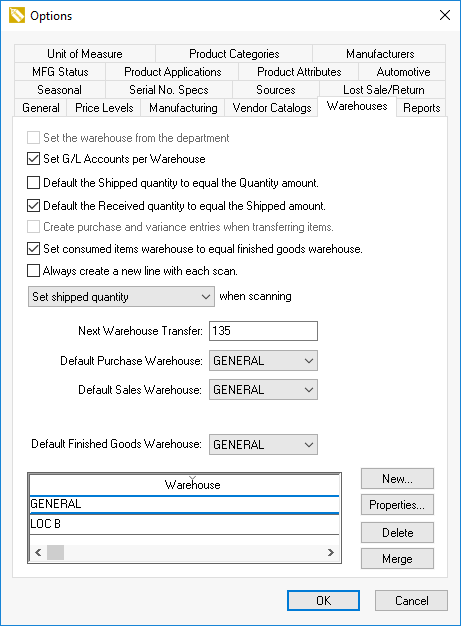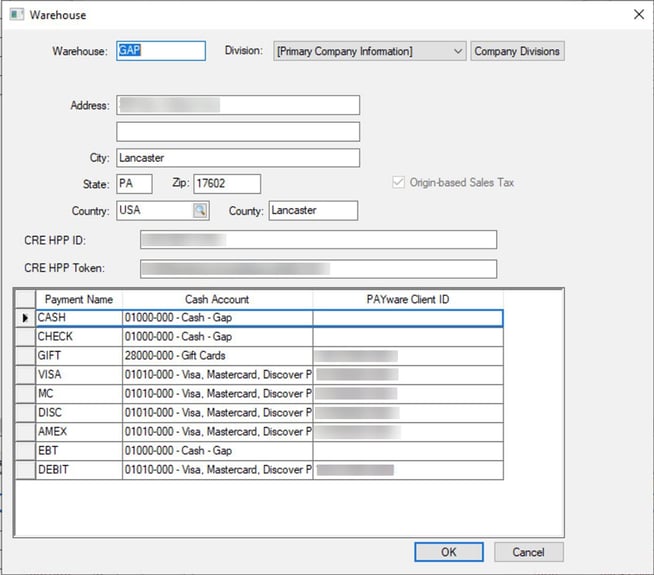- EBMS Knowledge Base
- Inventory
- Multiple Inventory Locations | Creating Locations
-
Client Resources
-
EBMS Main Documentation
- Introduction
- Getting Started
- Getting Started | Initial Installation
- Getting Started | Company Setup
- Quick User Guide | Financial Staff | Accountant
- Quick User Guide | Financial Staff | Accountant | Accountants Journal
- Quick User Guide | Sales Staff
- Quick User Guide | General Staff
- Features
- Reports
- Security
- Server Manager
- Technical
- Technical | Data Import and Export Utility
- Technical | SQL Mirror
- Automotive
- Automotive | Parts Catalog
- Automotive | Pricing
- Automotive | Point of Sale
- Automotive | Product Application
- Automotive | Keystone Interface
- Metal Supply
- Fuel Sales
- Horticulture
- Horticulture | Farm Setup
- Horticulture | Processing Payroll
- Horticulture | Managing the Farm
-
Sales
- Introduction
- Customers
- Customers | Miscellaneous Customers
- Proposals
- Proposals | Processing Proposals
- Proposals | Sets and Templates
- MyProposals
- MyOrders
- Sales Orders
- Invoices
- Materials Lists
- Sales and Use Tax
- Sales and Use Tax | TaxJar
- CRM
- CRM | Auto Send
- Recurring Billing
- Credits
- Customer Payments
- Payment Card Processing
- Payment Card Processing | Gift Cards
- Payment Card Processing | Loyalty Cards
- Payment Card Processing | Verifone Gateway
- Freight and Shipping Tools
- General Ledger Transactions
- Point of Sale
- Point of Sale | Point of Sale Hardware
- Point of Sale | Xpress POS System
- Point of Sale | Advanced Tools
- Signature Capture
- Salesperson Commissions
-
Inventory
- Product Catalog
- Product Catalog | Using Product Codes for No Count Items
- Product Pricing
- Product Pricing | Special Pricing
- Tracking Counts
- Unit of Measure
- Purchasing
- Special Orders and Drop Shipped Items
- Receiving Product
- Barcodes
- MyInventory and Scanner
- Components (BOM) and Accessories
- Components (BOM) and Accessories | Component Formula Tool
- Made-to-Order Kitting
- Configure-to-Order Kitting
- Multiple Inventory Locations
- Multiple Inventory Locations | Creating Locations
- Multiple Inventory Locations | Using Multiple Locations
- Multiple Inventory Locations | Product Catalog Sync
- Multi-Vendor Catalog
- Serialized Items
- Serialized Items | Purchasing or Manufacturing an Item
- Serialized Items | Selling and/or Associating an item with a customer
- Lots
- Product Attributes
- Product Attributes | Selling and Purchasing Items with Attributes
- Product Attributes | Custom Attributes
- Mobile Scanner (Legacy)
-
Labor
- Getting Started
- Workers
- Taxes and Deductions
- Work Codes
- Time and Attendance
- Time and Attendance | Time Track App
- Processing Payroll
- Closing the Payroll Year
- Processing Payroll - Advanced
- Salaried Pay
- Piecework Pay
- Direct Deposit
- 3rd Party Payroll Service
- Subcontract Workers
- Flag Pay
- Prevailing Wages
- MyDispatch
- MyTasks
- MyTime
- MyTime | Communications
- MyTime | Setup
- Tasks
- Tasks | Getting Started
- Tasks | Creating Tasks
- Tasks | Scheduling Tasks
- Tasks | Customizing Task Views
- Tasks | Managing Tasks
-
Financials
- Introduction
- Fiscal Year
- Chart of Accounts
- Budget
- Financial Reporting
- Transactions and Journals
- Transactions and Journals | Journals
- Account Reconciliation
- 1099
- Departments and Profit Centers
- Fund Accounts
- Bank Accounts
- Bank Feed
- Vendors
- Vendors | Miscellaneous Vendors
- Purchase Orders
- Expense Invoices
- Vendor Payments
- AP Transactions
- Landed Cost
- Fixed Assets and Depreciation
- Fixed Assets and Depreciation | Fixed Assets
- Fixed Assets and Depreciation | Fixed Assets | Adding Assets
- Fixed Assets and Depreciation | Processing Depreciation
- Fixed Assets and Depreciation | Disposing Assets
- MyJobs
-
E-commerce
-
Rental
-
Job Costing
-
Manufacturing
Create Warehouses
The EBMS software contains the option to manage inventory within multiple locations. The software identifies each location as a warehouse although a warehouse may identify a service truck, store, or other inventory location.
Complete the following steps to create multiple warehouses:
-
Open the warehouse options dialog by selecting Inventory > Options from the main EBMS menu and selecting the Warehouses tab as shown below:

-
Review the instructions within the Multiple Location Overview section to set the important warehouse settings on this dialog.
-
Click on the New button to create a new Warehouse as shown below. Select Properties to make warehouse setting changes.

-
Enter the Warehouse ID that identifies the location, store, or truck. This ID is widely used throughout EBMS and the inventory location should easily be identified by this code. A warehouse may identify a division or profit center as shown above. This feature allows the user to change the logo or other information based on the Division. Review the Getting Started > Company Setup > Company Profiles section within the main documentation for details on the Division setting.
-
The warehouse Address setting should be the shipping address for the current location. This setting is used to calculate shipping and sales tax. Review the following sections for details on where this address may be used:
-
Sales Tax location: Review the Sales Tax > Multiple Locations section in the sales documentation.
-
Shipping origin: Review the Freight and Shipping Calculations Overview section within the sales documentation.
-
GPS origin: Review the CRM > Online Routing and Directions section within the sales documentation.
-
-
Add the CRE HPP ID and CRE HPP Token settings if the virtual terminal are different for different warehouse locations. Review Using Multiple Locations > Selling Inventory from a Warehouse for HPP setting details.
This dialog may contain other warehouse-based settings. Review the following examples:
-
Payment Information as shown above: Review the Customer Payments > Cash Accounts, Deposits, and Reconciling Cash section within the sales documentation for more details.
-
Department settings: Department settings are required if the Set the warehouse from the department option is enabled within the Warehouse Settings in the previous dialog. Review the Associating each Warehouse with a Single Company Division and Department section for more details on the department settings.
Click OK to save warehouse settings.
Repeat the steps above for each warehouse location.
Click OK to save option settings.
